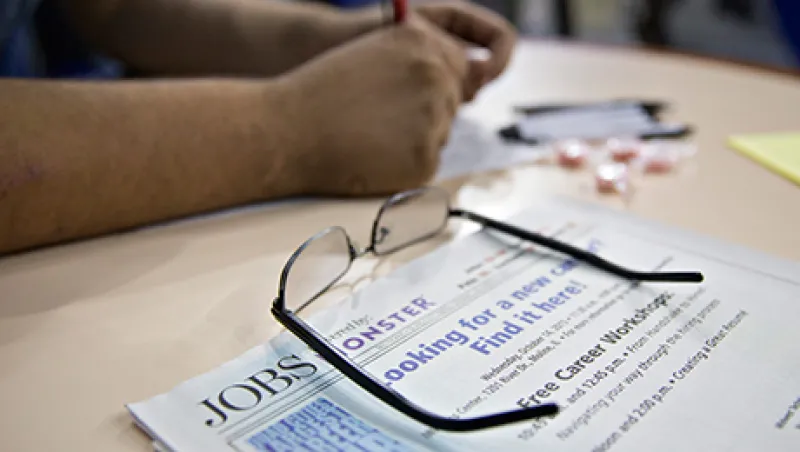Recent job growth numbers have some economists and investors on edge in the lead-up to the U.S. jobs report this week. But the reports don’t exactly tell a horror story.
Nonfarm payroll growth slipped under 150,000 in both August and September. That’s because a falling labor force participation rate, weighed down by increasing numbers of retiring baby boomers, and an economy six years into a recovery don’t provide a launching pad for huge employment gains.
“We saw all these pessimistic reports after the numbers for August and September,” says Gary Burtless, senior fellow in economic studies at the Brookings Institution in Washington. “Yes, it was a downer compared to over 200,000 every month. We’re making progress toward full employment — it’s just slower than it was the past 18 months.”
The slow but steady retirement of baby boomers is rearing its head bit by bit. “Pure demographics mean that what would be expected in terms of job growth for full employment is substantially below” the latest numbers, says James Stock, professor of political economy at Harvard University’s Kennedy School. “This is normal, though not necessarily optimal.” Many economists consider 5 percent unemployment to represent full employment. The economy gained 136,000 jobs in August and 142,000 in September. The rise had exceeded 200,000 in 19 of the previous 21 months. The jobless rate stood at 5.1 percent in September.
The way the math works is this, Stock says: The U.S. population is growing a bit more than 1 percent a year. At the same time, the labor force participation rate has been declining since 2000, hitting a 37-year low of 62.4 percent in September. “The most salient reason for that is baby boomers retiring,” Stock says. That slices about 0.3 percentage point off the workforce per year. So overall, the workforce is growing about 0.7 percent, or, if you take a more optimistic view, 0.9 percent per year. Thus job growth would need to run at a rate of 0.7 to 0.9 percent a year to sustain the present unemployment rate. With total employment at 142 million, that means that monthly job gains of 83,000 to 107,000 are necessary to keep the unemployment rate at its current level.
Or, as Stock puts it, “we need payroll increases of 80,000 to 110,000 for steady-state growth if we’re at full employment and account for new population.”
So expectations need to be adjusted. “People are used to 150,000 to 200,000 monthly gains, especially when we have rapid economic growth,” Burtless says. “We have an aging population that is now passing into retirement. Once people get past age 62, the labor force participation rates fall off precipitously.”
Then there is the economy. With the growth rate averaging only 2.2 percent a year since 2009, “the longer people are out of work, the harder it is for them to reengage,” says Michelle Meyer, deputy head of U.S. economics at Bank of America Merrill Lynch in New York. Another factor pulling down participation in the labor force, says Burtless, is a slowdown in immigration. Meyer sees the labor force participation rate slipping to 62.3 percent through the end of next year.
So what is the optimal level of payroll expansion?
The perfect monthly job growth rate should be the one that creates full employment with reigniting inflation. According to Stock, that sweet spot is somewhere in the range of 80,000 to 110,000. Considering that inflation is far below the Federal Reserve’s target of 2 percent, with the Fed’s favorite inflation gauge, the personal consumption expenditures price index, at 0.3 percent, “overshooting on employment is a good thing,” Stock says. Given that it’s not just demographics that have pushed people out of the labor force, larger job gains would allow some of those people back in, he says.
“I don’t consider 130,000 to 150,000 to be such bad news,” he says. “If that continues for a while, people will come into the labor force, and unemployment goes down. A little faster would be terrific: 140,000 to 180,000.”
If the forecast of Bank of America economists is correct, Stock will get his wish. They predict an average monthly payroll increase of 160,000 for the fourth quarter and 150,000 next year.
When it comes to monetary policy, the Federal Reserve should refrain from raising interest rates at the current level of job growth, Burtless says, noting, “All this talk about raising rates: What do people want to accomplish when inflation is so low and the job market has so much slack?”
Get more on macro.







